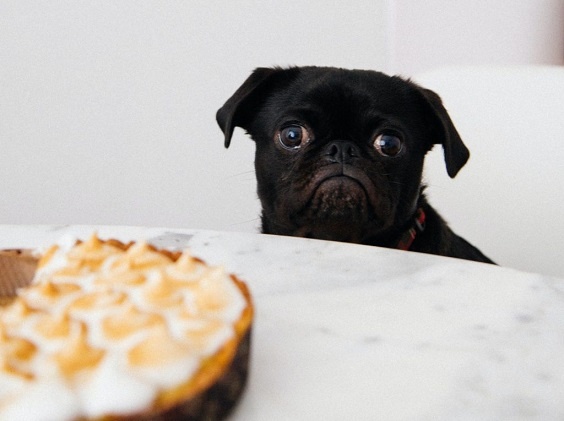Intermittent fasting has a wide range of effects on the endocrine system of which many could be detrimental. Therefore, time-restricted feeding (TRF) should not be prescribed generically without a health professional examining individual-specific costs and benefits to see if TRF is appropriate for a person.
Type 2 Diabetes (T2D) is a common disease, primarily caused by insulin resistance; T2D contributes significantly to increased morbidity and mortality risk1. Insulin resistance is the lack of response of the body’s cells to the hormone insulin, which signals to cells to uptake glucose2. There is significant focus on intermittent fasting (eating daily dietary requirements in a restricted period of time, such as consuming a day’s food in 8 hours instead of 12 hours) due to its effectiveness as a treatment option for diabetes1. Intermittent fasting, also called time restricted feeding (TRF), is widely endorsed in the health and fitness industry. However, there are numerous significant effects of TRF on the endocrine system, many of which could be beneficial or potentially be a health risk.
A study compared hormonal profiles of resistance-trained men who were split into 2 groups: TRF group consuming daily calories in an 8 hour window versus control group consuming daily calories in a 13 hour window (assuming each meal takes 1 hour to consume)3. The control group had a 13.3% decrease in insulin whilst the TRF group had a 36.3% decrease3. This dramatic effect of TRF to reduce serum insulin is probably the cause of the beneficial effects of TRF on insulin sensitivity, and lead to its role as potential treatment option for T2D.
The control group had a 1.3% increase in insulin-like growth factor 1 (IGF-1) whilst the TRF group had a 12.9% decrease3. IGF-1 is an important growth factor which stimulates growth of tissues throughout the body, such as the brain, bones and muscles4, therefore, the significant reduction in IGF-1 could have negative effects such as reducing bone density and muscle mass but could also prevent the growth of existing tumours.
The control group had a 2.9% decrease in cortisol whilst the TRF group had a 6.8% increase3. This increase in cortisol would increase its catabolic, protein degrading effects in tissues such as muscle but would also increase lipolysis (breakdown of body fat for energy)5.
The control group had a 1.3% increase in total testosterone whilst the TRF group had a 20.7% decrease3. This dramatic decrease in testosterone from TRF could cause decreases in sexual function, bone and muscle integrity and even cognition function due to testosterone’s wide array of effects on a range of tissues6.
The control group had a 1.5% increase in triiodothyronine (T3) whilst the TRF group had a 10.7% decrease3. This observed reduction in T3 would decrease metabolic rate and could contribute to depression, fatigue, decreased peripheral reflexes and constipation7 due to the physiological actions of T3.
In conclusion, intermittent fasting has a wide range of effects on the endocrine system of which many could be detrimental. Therefore, TRF should not be prescribed generically without a health professional examining individual-specific costs and benefits to see if TRF is appropriate for a person.
***
References:
- Albosta, M., & Bakke, J. (2021). Intermittent fasting: is there a role in the treatment of diabetes? A review of the literature and guide for primary care physicians. Clinical diabetes and endocrinology, 7(1), 3. https://doi.org/10.1186/s40842-020-00116-1
- NIDDKD, 2021. Insulin Resistance & Prediabetes. Available online at https://www.niddk.nih.gov/health-information/diabetes/overview/what-is-diabetes/prediabetes-insulin-resistance
- Moro, T., Tinsley, G., Bianco, A., Marcolin, G., Pacelli, Q. F., Battaglia, G., Palma, A., Gentil, P., Neri, M., & Paoli, A. (2016). Effects of eight weeks of time-restricted feeding (16/8) on basal metabolism, maximal strength, body composition, inflammation, and cardiovascular risk factors in resistance-trained males. Journal of translational medicine, 14(1), 290. https://doi.org/10.1186/s12967-016-1044-0
- Laron Z. (2001). Insulin-like growth factor 1 (IGF-1): a growth hormone. Molecular pathology : MP, 54(5), 311–316. https://doi.org/10.1136/mp.54.5.311
- Thau L, Gandhi J, Sharma S. Physiology, Cortisol. [Updated 2021 Feb 9]. In: StatPearls [Internet]. Treasure Island (FL): StatPearls Publishing; 2021 Jan-. Available from: https://www.ncbi.nlm.nih.gov/books/NBK538239/
- Bain J. (2007). The many faces of testosterone. Clinical interventions in aging, 2(4), 567–576. https://doi.org/10.2147/cia.s1417
- Armstrong M, Asuka E, Fingeret A. Physiology, Thyroid Function. [Updated 2020 May 21]. In: StatPearls [Internet]. Treasure Island (FL): StatPearls Publishing; 2021 Jan-. Available from: https://www.ncbi.nlm.nih.gov/books/NBK537039/
***






































